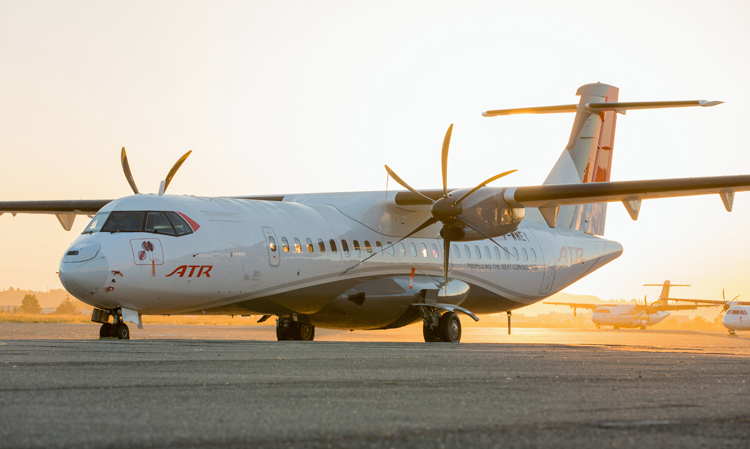INDIAN ARMED FORCES CHIEFS ON OUR RELENTLESS AND FOCUSED PUBLISHING EFFORTS

The insightful articles, inspiring narrations and analytical perspectives presented by the Editorial Team, establish an alluring connect with the reader. My compliments and best wishes to SP Guide Publications.

"Over the past 60 years, the growth of SP Guide Publications has mirrored the rising stature of Indian Navy. Its well-researched and informative magazines on Defence and Aerospace sector have served to shape an educated opinion of our military personnel, policy makers and the public alike. I wish SP's Publication team continued success, fair winds and following seas in all future endeavour!"

Since, its inception in 1964, SP Guide Publications has consistently demonstrated commitment to high-quality journalism in the aerospace and defence sectors, earning a well-deserved reputation as Asia's largest media house in this domain. I wish SP Guide Publications continued success in its pursuit of excellence.
- Indian Air Force Aims for Full Indigenous Inventory by 2047 — Air Chief Marshal A.P. Singh
- Rajnath Singh assumes charge as Defence Minister for the second consecutive term
- Interim Defence Budget 2024-25 — An Analysis
- Union Defence budget 2024
- Prime Minister Modi Flies in the LCA Tejas
- New Chapter in India-Italy Defence Ties
- Airpower beyond Boundaries
ATR Highlights Untapped Potential for Regional Aviation in Vietnam
ATR sees market for 25 ATR 72-600 in the country

ATR, the world's leading manufacturer of regional aircraft, today presented the findings of a comprehensive whitepaper, "Propelling Vietnam's Regional Aviation". The presentation took place during the "Unlocking Vietnam's Regional Aviation" workshop in Hanoi, a collaborative event with Business France and Vietnamese transport consultancy TEDI (Transport Engineering Design Inc.). This study, conducted in collaboration with TEDI, underscores the potential of regional air connectivity in Vietnam and ATR's engagement with key transport and aviation stakeholders to explore new opportunities for the country's air transport network.
The report highlights how regional aviation can enhance Vietnam's connectivity by offering new, convenient travel options that complement existing transport infrastructure. Currently, 90 per cent of domestic air traffic is concentrated at just 10 of the country's 22 airports, leaving many regional airports underutilised. At the same time, 25 per cent of domestic flights cover distances under 300 nautical miles (555 kilometres) but are operated by larger aircraft, which limits efficiency in terms of cost and frequency.
Jean-Pierre Clercin, Head of Region Asia Pacific at ATR, says: "Regional aviation has the potential to significantly enhance connectivity across Vietnam. By complementing surface-based transport, it can improve mobility, strengthen a network of secondary cities, and ensure that more communities benefit from Vietnam's economic growth. Additionally, it will optimise the utilisation of existing regional airports."
Renowned for its fuel efficiency and lower environmental impact, ATR turboprops consume 45 per cent less fuel and emit 45 per cent less CO2 compared similar-sized regional jets. ATR aircraft offer a more responsible and cost-effective solution for shorter routes, enabling airlines to profitably connect secondary cities and drive economic growth in previously underserved regions.
A growing market with untapped potential
Vietnam's aviation sector is experiencing rapid growth, with domestic air travel projected to grow, in the period 2023-2027, by over 20 per cent. This burgeoning demand necessitates a more robust and interconnected air transport network. The government's plan to expand the network of approved commercial airports to 30 from 22 by 2030, further underscores the critical role of regional aviation in connecting communities and unlocking the country's full economic potential.
TEDI's comprehensive research study identified 149 domestic routes within 300 nautical miles (555 km). The study also revealed that 87 routes out of 149 routes had traffic potential but remain unserved, and would require a fleet of 25 ATR 72-600 aircraft to be served effectively. The white paper provides a clear roadmap for airlines and policymakers to strategically develop regional air services and capitalise on this significant market opportunity.
Đào Ngọc Vinh, General Director of TEDI says: "TEDI is delighted to have collaborated with ATR on the Vietnam airport traffic study, which highlights the country's significant regional potential. As Vietnam continues to develop new airports, TEDI looks forward to contributing our expertise to this exciting phase of regional aviation development."
Accelerating sustainable connections
The economic and social impact of regional aviation is profound: studies show that a 10 per cent increase in regional flights can lead to a 5 per cent rise in local tourism, a 6 per cent boost in regional GDP and an 8 per cent increase in foreign direct investment. ATR's success in markets such as Japan and New Zealand demonstrate how regional aviation can drive connectivity and economic development. By connecting people and businesses across the country, regional aviation plays a crucial role in driving economic growth, fostering innovation and enhancing Vietnam's competitiveness on the global stage.
By tapping into its potential for regional aviation, Vietnam stands to achieve a more integrated air transport network that aligns with its broader vision of becoming a key aviation gateway in Southeast Asia.
ATR remains committed to partnering with Vietnamese stakeholders to turn this vision into reality, delivering modern, sustainable and economically viable solutions for the country's aviation needs.





